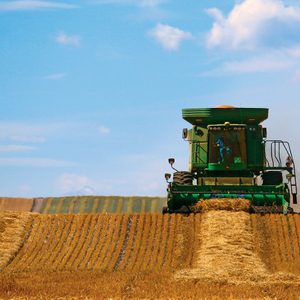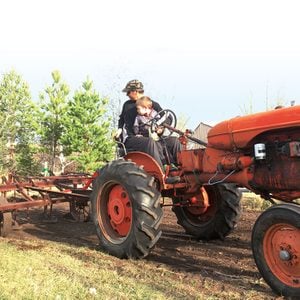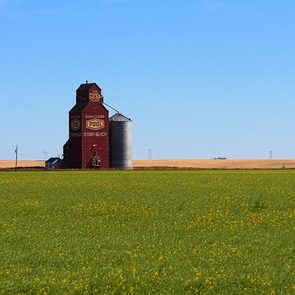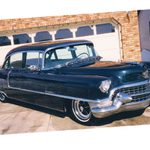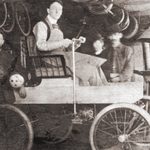A Passion For Restoring Antique Farm Equipment
A sister artfully captures the impressive results of her brother’s lifelong hobby.
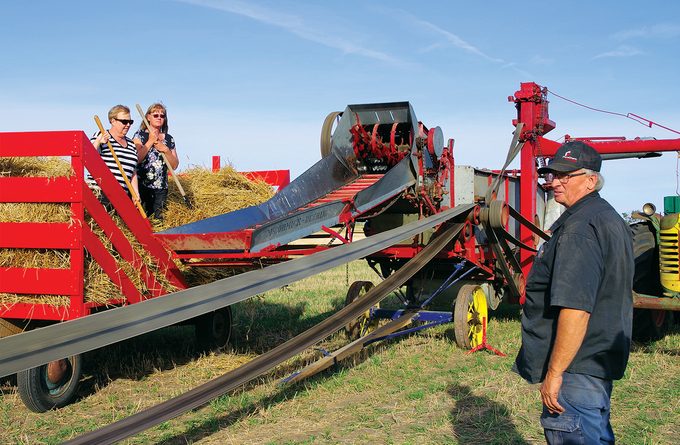
My brother, Scott, and I grew up on a mixed cattle and grain farm in the Elmore district south of Carievale, Saskatchewan. Our parents encouraged us to explore different interests and hobbies. I recall doing paint by numbers kits and string art together. Mom taught me to sew and knit and Dad taught Scott mechanics. We both belonged to the local 4-H club where Scott took mechanics, and I participated in several different projects, but crafts was my favourite.
Fast-forward to our adulthoods. While I left the farm and pursued my own hobby—photography—Scott remained true to his interest in mechanics. For 40-plus years he has restored antique farm equipment including stationary engines, tractors, machinery and most recently a binder and a threshing machine. A stationary engine is one that remains in a fixed position; many farms purchased one engine and applied the power it produced to different machinery.
Scott always has a new project on the go that can be classified as just arrived in “rusty” shape, in progress or completed. I love to photograph Scott’s antique farm equipment restoration projects in all their various stages.
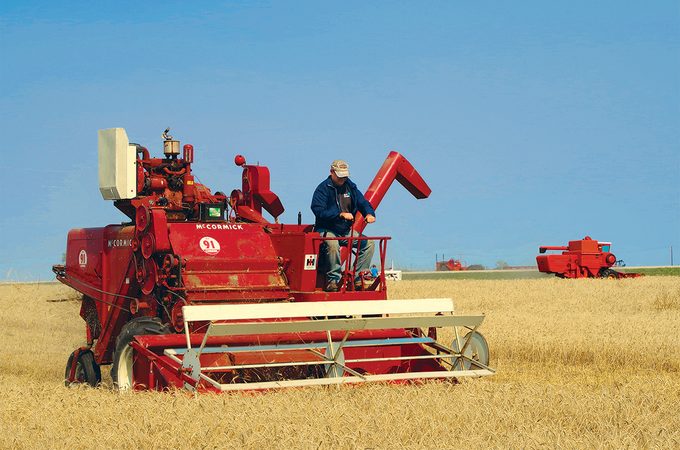
Scott’s dream was to host a threshing demonstration to showcase both his and others’ antique farm equipment. With the restoration of one machine complete, and the acquisition of another restored thresher, the plans were set. Through seeking parts and restoration projects, as well as planning and participating in antique tractor pulls, Scott has made many friends and connections over the years.
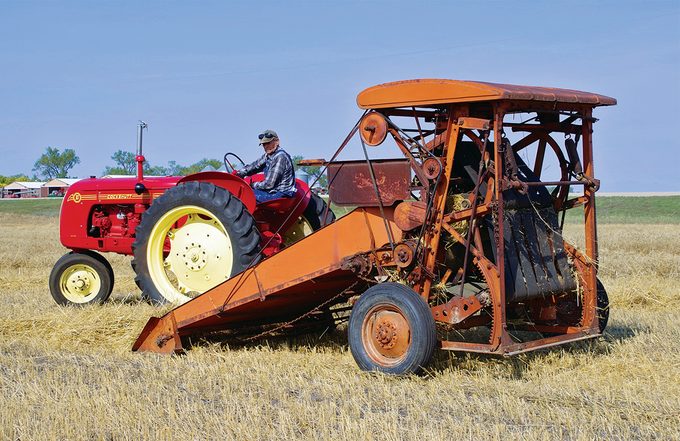
These friends came from southeast Saskatchewan and southwest Manitoba to help prepare and assist with the planned demonstrations. Equipment and tractors arrived at the farm from near and far. There was an impressive line-up including two threshing machines, hay racks, grain wagons, combines and swathers (from the 1960s and ’70s), balers and binders, as well as ploughs and vintage tractors dating from the early 1900s to late 1970s. It was an impressive collection of antique farm equipment.
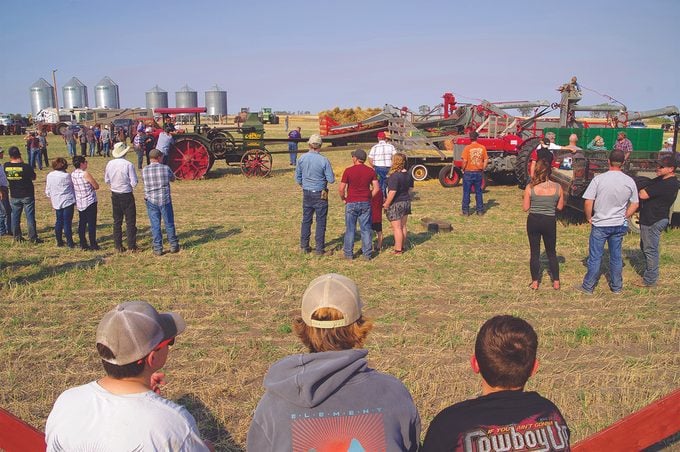
Saturday, September 18, 2001, was a sunny, unusually warm day with light winds; the weather could not have been more perfect. Friends, neighbours and family arrived to observe the old machinery being showcased. One hundred and fifty people signed the tractor fender being used as a guest book.
The first event was swathing and combining in a field of standing wheat. Next, the binder was put to work after a dozen men solved the problem of the binder not tying knots! Soon after, an early model round baler cleaned up the straw. Previous to this, most hay/straw balers made rectangle-shaped bales.
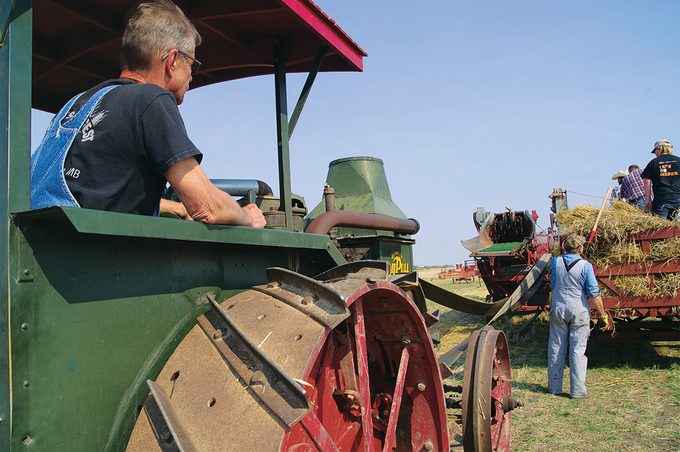
The crowd moved back to the yard where the two threshers stood ready. The hay racks came in from the field filled with sheaves. A Rumely Oil Pull tractor (early 1900s) that would have powered a threshing machine in its day, did so again. Volunteers pitched sheaves into the awaiting threshers. Amazingly, the threshers chewed through several hay racks of sheaves with ease. The second threshing machine was equally efficient but was powered by a newer but still vintage (1950s) McCormick-Deering tractor.
The final demonstration was a stationary baler. Volunteers pitched the straw and manually “tied” the bales with wire. The community who gathered that day stayed to share fellowship and admiration for the operational vintage equipment. In appreciation, a delicious ham supper was served to all who attended.
As for me, my task that day was to photographically record the people and events. I got to enjoy the event all over again as I created a keepsake photobook. We reproduced the booklet to share with the volunteers. Scott’s hobby and my hobby came together that day in a creative way.
I look forward to combining our hobbies again at the next annual threshing demonstration!
Can’t get enough antique farm equipment? Check out this Alberta farmer’s collection of old John Deere tractors.
